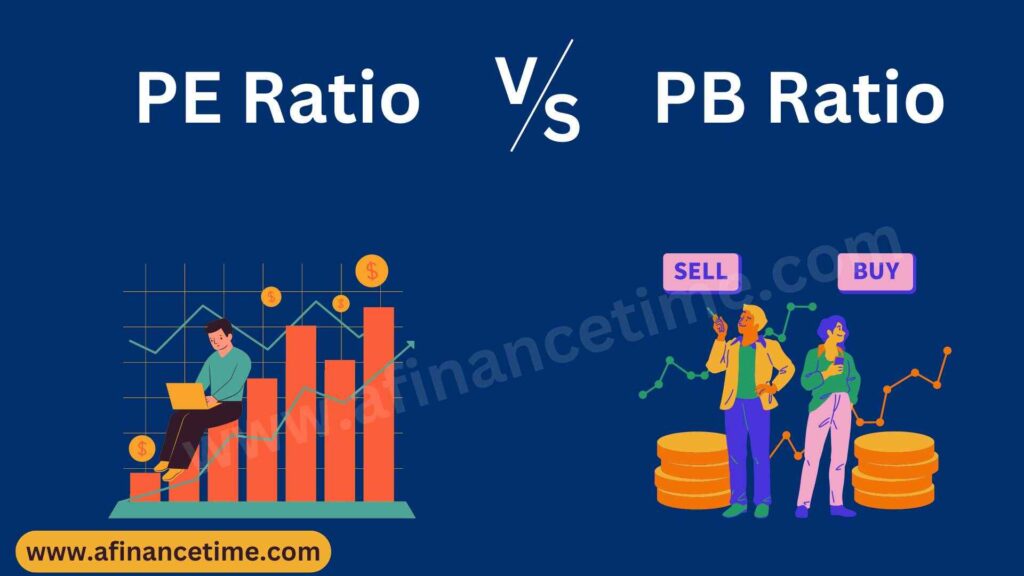How are you Friends? Today we have brought a new topic for learning. In today’s article, we are going to get detailed information about What is PE and PB Ratio? This article is a very useful option for those who invest in the share market. Along with research, we also put our experiences in our articles so that the readers can benefit more and learn something new, so get ready to dive into the article with us.

What is PE and PB Ratio?
PE and PB Ratio is often used in the stock market. PE and PB Ratio is one of the valuation tools that helps in determining the valuation of a company\’s stock.
PE Ratio means Price to Earning ratio, company\’s share price can be understood according to the company\’s earnings through the PE ratio.
PB Ratio means Price to Booking ratio, from PB ratio you can understand the stock price of the company through the real valuation of the company.
Today we will discuss both the ratios in detail and see the difference between the PE and PB ratio in details. So let us try to understand it in simple language.
Also Read: Groww vs Upstox : Which is better broker?
What is PE Ratio?
From PE ratio it is possible to understand which stock is overvalued and which stock is undervalued. Overvalued means that the stock is trading at a price higher than its real value or its price is expensive and there is a possibility that stock price may fall in the future. Undervalued means that the stock is trading at a price below its real value or its price is cheap and there is a possibility that its price may go up in the future.
The formula for finding the PE ratio is, PE ratio = Market Price of Stock/Earning Per Stock.

Also Read: Is Upstox Application Good for Option Trading in India?
Here in the above photo we have seen how to calculate PE ratio. If we compare stock A and stock B, we can understand which stock can be a profitable choice for us in the future.
Stock B has lower PE ratio so we have to pay less for every rupee of earnings. Stock B is undervalued so stock B is more likely to rise in price than stock A in the future.
Stock A is trading at a low price but Stock A has a high PE ratio which indicates that the stock is overvalued which indicates that the stock may go down in the future.
In short, If the PE ratio is high, the stock\’s price will be higher than its earnings and is considered overvalued. If the PE ratio is low, the stock will be worth less than its earnings and is considered undervalued. If you want to invest, then you can do it in a low PE ratio stock which gradually reaches its intrinsic value and can give you good returns.
Also Read: Does Upstox Charge for Rejected Orders in 2024?
What is PB Ratio?
The PB ratio is also a valuation ratio but it uses the book value of the company instead of earnings. Book value means that a company\’s book value is the total assets it has after deducting its liabilities from its account.

If PB ratio > 1, so stock is overvalued and PB ratio < 1, So stock is undervalued. If the PB ratio is less than one, it means that if the company were to sell all its assets in the market, it would be able to sell for more than the book value. Due to such reasons investors always invest in stocks with low PB ratio.
Here the PB ratio of stock A is 1.66 and the PB ratio of stock B is 2 which indicates that stock B is overvalued.
Difference Between PE and PB Ratio
| PE Ratio | PB Ratio |
|---|---|
| Compare the company’s current market price to its earning per share | Compare the company’s current market value to its book value |
| Investor’s desire to pay for each rupee of its earnings | Investor’s desire to invest per rupee of book value |
| If the company has no income or if the company is in loss then PE ratio cannot be deducted | PB ratio can be deducted even if the company is in loss as it takes into account the assets and liability. |
| It can be used in any industry | It is mostly used in financial and banking sector |
Also Read:
- Reliance Home Finance Share Price Target 2024, 2025, 2026 and 2030
- Onmobile Share Price Target 2024, 2025, 2026 and 2030
- FCS Software Share Price Target 2025, 2026 to 2030 & 2040
- Zodiac Energy Share Price Target 2025 to 2030
Conclusion
In conclusion, both PE (Price to Earnings) and PB (Price to Book) ratios are essential tools for evaluating stocks, helping investors determine whether a company’s stock is overvalued or undervalued. The PE ratio is based on the company’s earnings, while the PB ratio focuses on its book value. A high PE ratio suggests overvaluation, while a low PE ratio signals undervaluation. Similarly, a PB ratio greater than 1 indicates overvaluation, and less than 1 signals undervaluation. Each ratio provides valuable insights, and together, they offer a comprehensive view of a company’s financial health and market potential. In short, we have discussed PE and PB ratio in details in the article. Investing only by looking at the PE and PB ratio can prove harmful because there are many other factors at work in the stock price. We have seen officially how to calculate PE and PB ratio. We also saw the difference between the two ratio carefully.
FAQs
What is P/E and P/B ratio?
PE and PB ratios are a type of valuation factor. PE and PB ratio are used to find out whether a company\’s stock is overvalued or undervalued.
What is a Good PB ratio for banks?
You can compare the PB ratio of all banks, the closer the PB ratio is to 1, the better.
What is Full Form PE and PB Ratio?
- PE Ratio : Price to Earnings Ratio
- PB Ratio : Price to Booking Value Ratio
How to Calculate PE Ratio and PB Ratio?
- PE Ratio = Market Price of Stock divided by Earning Per Stock.
- PB Ratio = Market Price of Stock divided by Book Value Per Stock





